IKEA through the ages: how our favourite furniture store shaped our homes
The story of a flatpack empire

Classic Picture Library / Alamy Stock Photo ; Fishman64/ Shutterstock
Famous for everything from flatpack furniture to steaming plates of meatballs, our favourite Swedish home furnishings store has been around for more than 80 years. Many of IKEA’s products have become household names over the decades, and some have gone on to become collectors' items worth thousands.
From its humble beginnings in rural Sweden, we look back at the quirky history of this iconic brand, explore its global influence from Africa to Japan, plus show you some of the most iconic pieces of furniture IKEA has made that could be worth a fortune if you own them. Read on to uncover the IKEA story...
Meet the IKEA founder

Classic Picture Library / Alamy Stock Photo
The man behind IKEA Ingvar Kamprad was born in 1926 in a quiet farming village in southern Sweden. From an early age, Kamprad had an entrepreneurial spirit – he started selling matches to make money at the age of five.
As a reward for excelling at school, his father gave him a sum of money which he used to establish IKEA in 1943 aged just 17. The word ‘IKEA’ is an acronym of Kamprad’s initials followed by Elmtaryd and Agunnaryd, the farm and village where he grew up.
Expanding the range
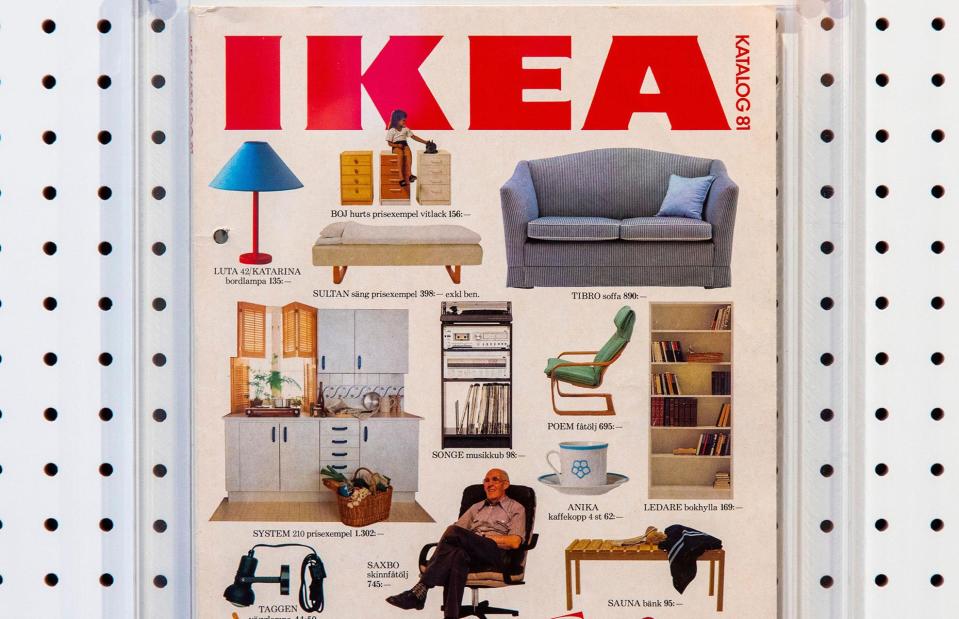
Photononstop / Alamy Stock Photo
Kamprad started by selling replicas of the contemporary table in his Uncle’s kitchen – which became a runaway success. In 1948, the entrepreneur expanded his furniture range and began to offer a selection of other affordable pieces by mail order.
The first annual IKEA catalogue was launched in 1951 and the first showroom followed soon after, in 1953.
The first IKEA superstore
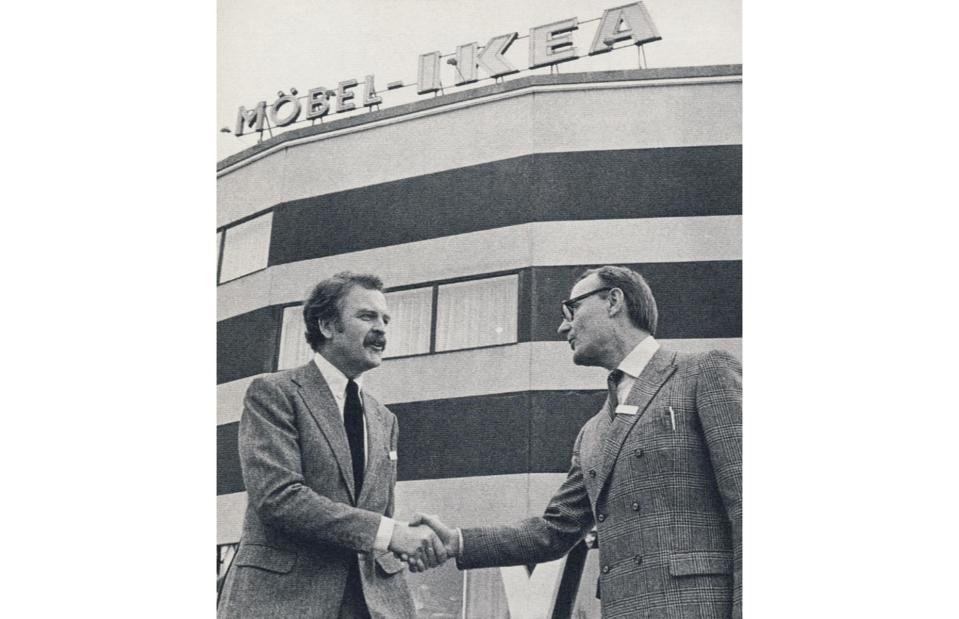
Archive PL / Alamy Stock Photo
It wasn’t until 1956 that Kamprad had his Eureka moment when he saw two delivery men removing the legs from a table to fit it into their vehicle. This incident sparked the beginnings of flatpack furniture as we know it today.
Kamprad realised he could develop the concept by manufacturing affordable furniture that customers could construct themselves. Sales shot up, and the first IKEA superstore opened in Älmhult, Sweden in 1958.
IKEA goes international
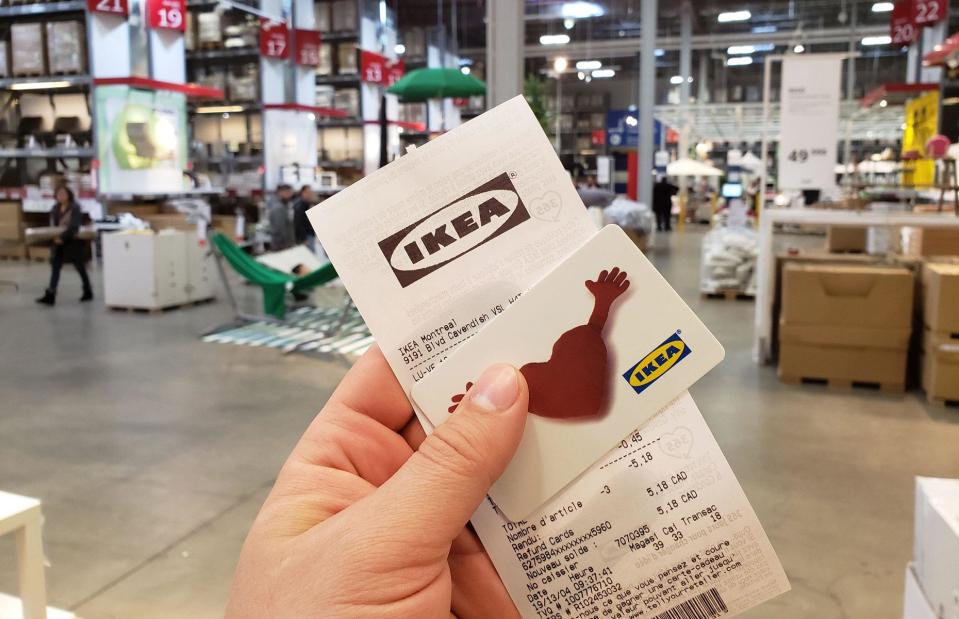
dennizn / Alamy Stock Photo
In the years that followed, the firm expanded exponentially as stores were opened throughout Scandinavia, followed by the rest of Europe and eventually across the globe.
Today, the IKEA Group owns a whopping 473 stores in 63 markets and while the classic IKEA look remains consistent across the globe, the brand has made some interesting adaptations to best suit the needs of local consumers...
IKEA in the UK

Ceri Breeze / Shutterstock
Britain’s IKEAs have been responding to the cost of living crisis, recognising a clear pattern of customers seeking 'durable solutions that enhanced the dual role of the home as a sanctuary and a space for work and leisure activities' in response to nationally tightened purse strings.
However, Britain’s IKEAs still saw an 11.9% growth in sales, with 1 million news visits across its 22 stores, factors which have fuelled plans for an exciting new store opening…
IKEA in central London
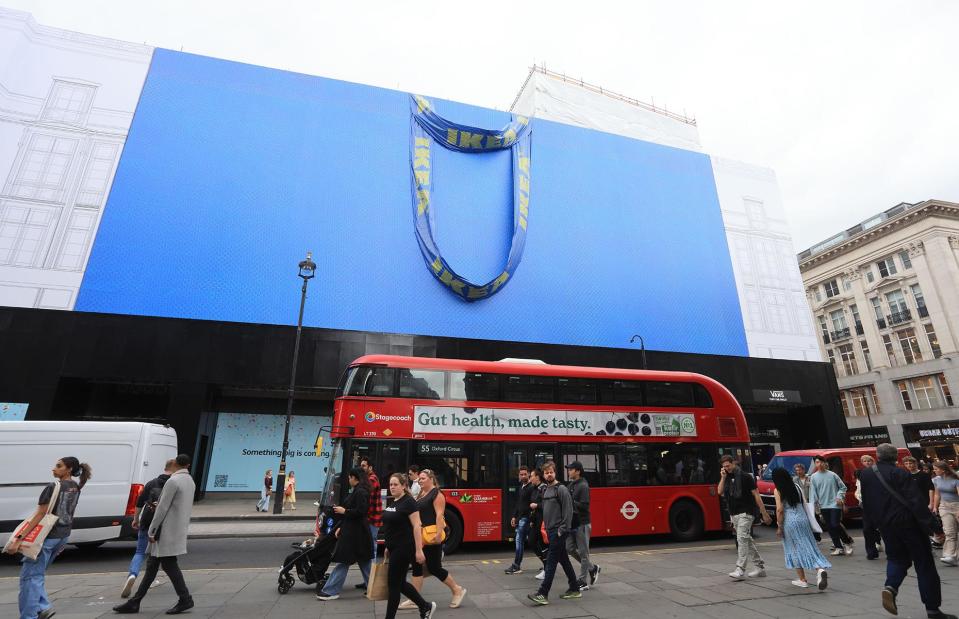
Monica Wells / Alamy Stock Photo
IKEA is finally coming to central London with a highly anticipated super-store on Oxford Street. While the store was first hinted at in 2015, then promised to open in the autumn of 2023, it’s finally been slated for completion in spring of 2025 according to Time Out.
The major outpost will be spread across 82,000 square feet and six floors, and will include retail space, offices, a market hall and even a Swedish deli. So sit tight London, the meatballs are coming…
IKEA in Germany
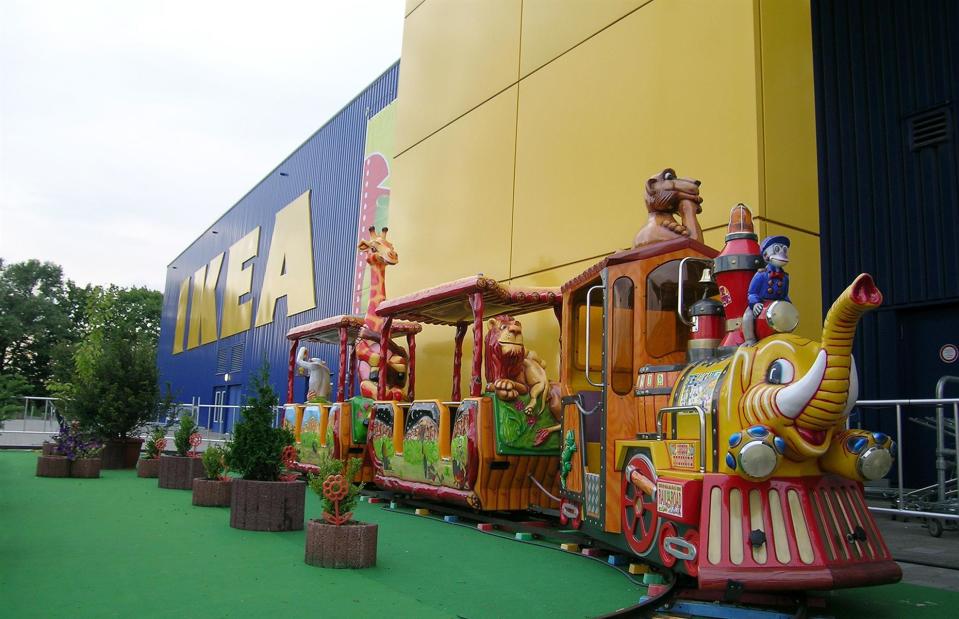
blickwinkel / Alamy Stock Photo
Holding the record for the most IKEA stores in the world, IKEA certainly provides plenty of options for its German shoppers. Studies from Statista show that in terms of brand awareness, 94% of Germans recognise the iconic blue and yellow logo, and of that 94%, 71% claim to be fans of its products.
Innovative store features

Oleksandr Prykhodko / Alamy Stock Photo
With 55 stores around the country, Germany pulls out all the stops when it comes to attracting customers. German IKEAs are noted for their innovation and many stores include features like recycling stations (pictured here), or playparks for kids.
In more recent news, IKEA Germany has just announced its plans to introduce 1,000 new green electricity fast-charging stations across all of their stores from 2025 as part of its efforts to fight climate change, according to electrive.com.
IKEA in Australia
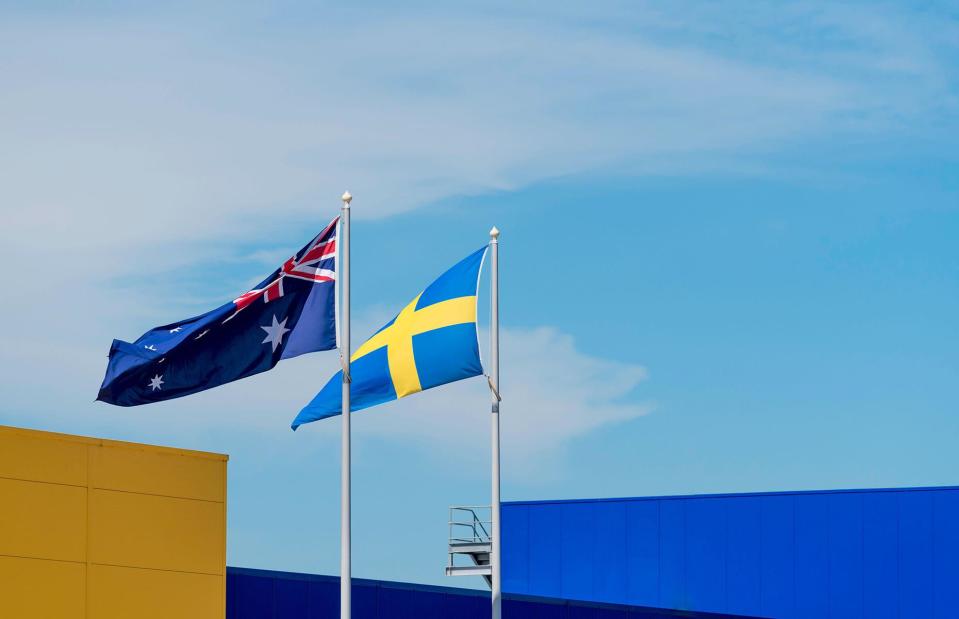
Stephen Dwyer / Alamy Stock Photo
IKEA first arrived in Australia in 1975 and now offers seven stores across the country. Best-selling items have included the GLADOM Tray Table, the FABRIKÖR Glass Door Cabinet, the HEKTAR work lamp, the NISSEDAL Mirror and the APPLARO Storage Bench, according to The Daily Mail.
And while Australian IKEA products look similar to most of the others in the Western market, they have introduced their own flair in the dining hall in the form of plant-based hot dogs.
Investment in sustainability
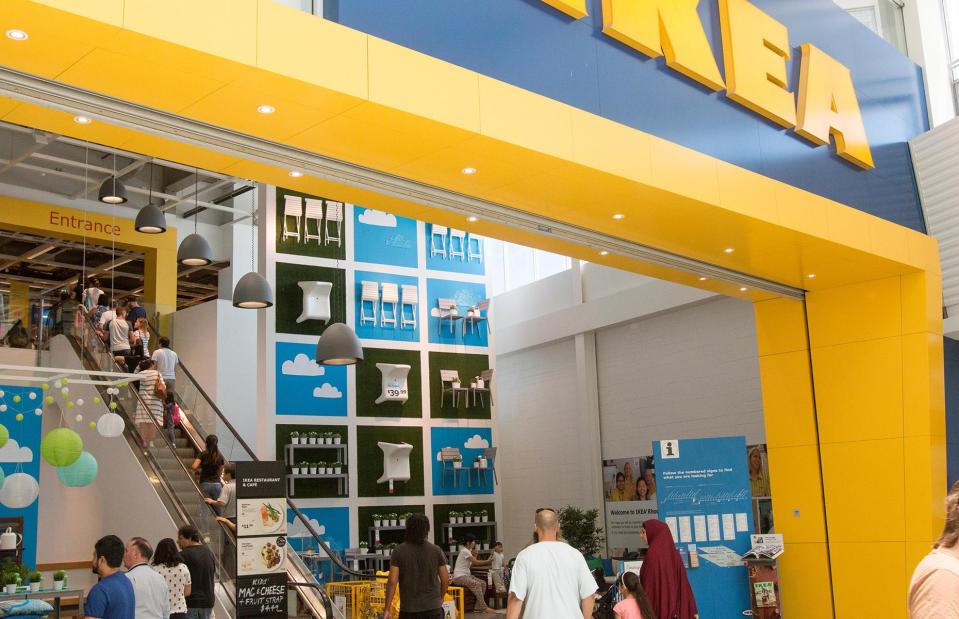
martin berry / Alamy Stock Photo
However, the environmentally friendly initiative doesn’t stop there. Conscious of the substantial impact on the Australian climate in particular brought on by global warming in recent years, IKEA’s Australian stores have also put significant investments into emission reduction for their delivery vehicles.
In the spring of 2024, IKEA announced a plan to sink $4.5 million AUD ($2.9m / £2.3m) into a national charging infrastructure network for electric deliveries.
IKEA in America

Images-USA / Alamy Stock Photo
IKEA’s most dramatic market expansion, since it first opened its doors in Pennsylvania in 1985, has taken place in the United States. In 2023, the store announced its largest-ever investment in new American stores, banking on the steady increase in popularity of the brand across the nation.
The company planned to invest $2.2 billion (£1.7 bn) over the course of the next three years, opening 17 new locations and creating upwards of 2,000 new jobs, according to the Wall Street Journal.
A dramatic expansion
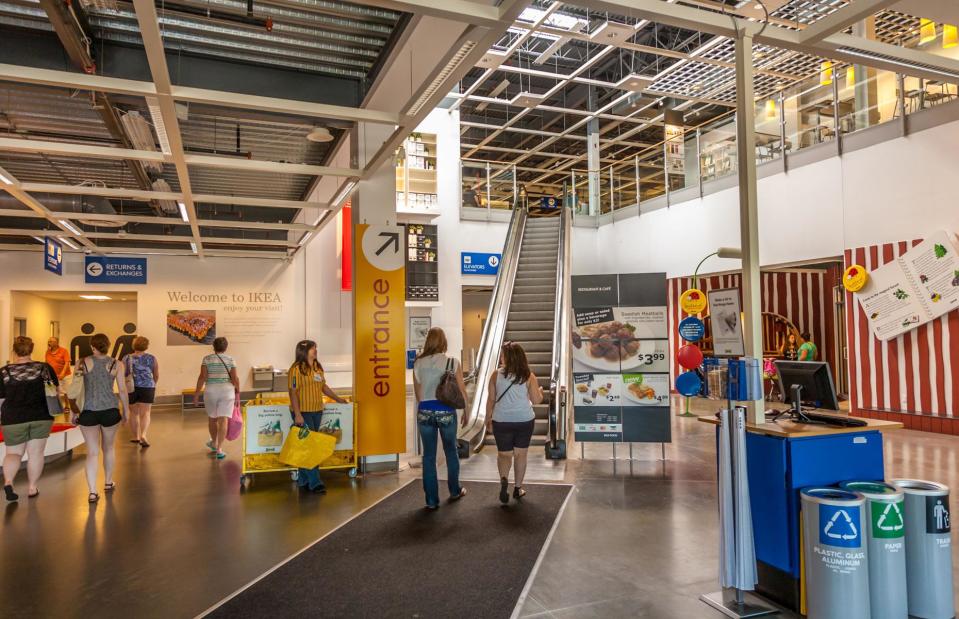
Ron Buskirk / Alamy Stock Photo
There are currently 52 IKEA locations across the US, many of which offer the relatively new feature of ‘plan and order points,’ where customers can plan the layout of a certain room in their home with the help of in-store consultants before placing their orders.
While the US currently has the second highest number of stores after Germany, it is expected to take first place at its current rate of expansion.
Afforable quality

ACHPF / Shutterstock
For the average Canadian customer, affordability without sacrificing quality is key, “especially given the current cost-of-living crisis,” said Selwyn Crittendon, CEO and Chief Sustainability Officer, IKEA Canada, speaking as part of the IKEA Canada Summary Report for Fiscal Year 2023.
Items like storage units and dressers prove particularly popular on the Canadian market, with the TROFAST children’s storage product family alone garnering $11.4 million CAD ($8.3/£6.5) in sales.
IKEA in Canada

JHVEPhoto / Shutterstock
Another rapidly expanding market, IKEA reported that its Canada stores saw sales climb to a staggering $2.9 billion ($2.1bn/£1.6bn) CAD in 2023 after over four decades of operation in the country.
Food sales, too, saw a dramatic increase of 27% up to $123 million ($90m/£70.4), including 15.6 million meatballs, 2.1 million plant balls and 3 million hot dogs – talk about hungry consumers!
IKEA in South America
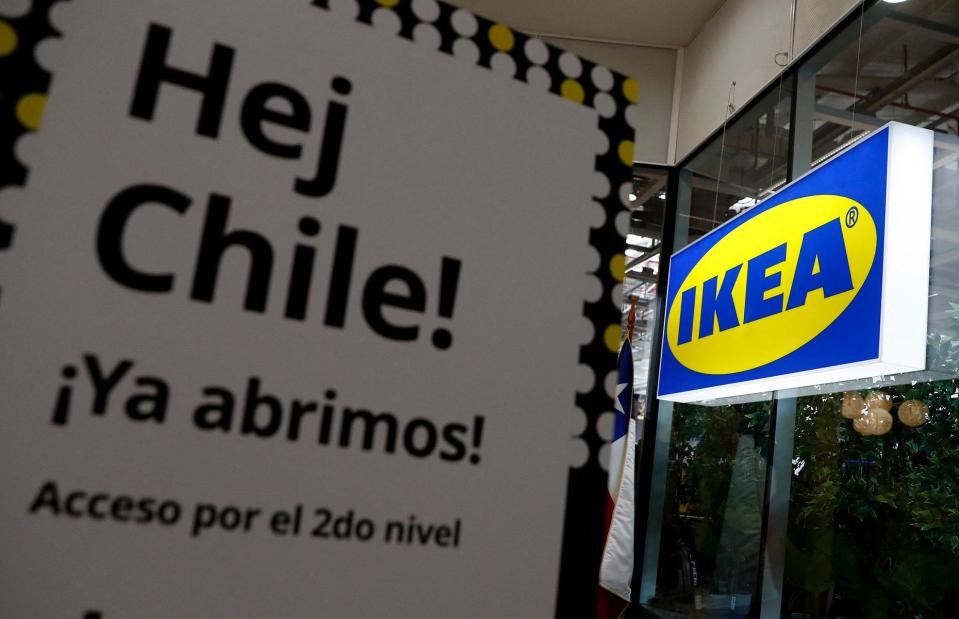
JAVIER TORRES / Contributor / Getty
IKEA first touched down in South America in 2022 with a store opening in Santiago, Chile, and expanded into Columbia with a new store in Mallplaza NQS, Bogotá in 2023.
The new Columbian outpost is South America’s largest IKEA, comprising 280,000 square feet across three stories, with 40 room settings, a 600-seat restaurant and a range of over 6,000 quintessential IKEA products.
A runaway hit

JAVIER TORRES / Contributor / Getty
IKEA has proved a runaway hit in the South American market, with eager shoppers queuing for entry at the opening of the inaugural store in Santiago back in 2022, pictured here.
IKEA now has four locations open across South America, including three further Columbian stores in Falabella, Medellín, and, the most recent location to open worldwide, one in Cali.
IKEA in Japan
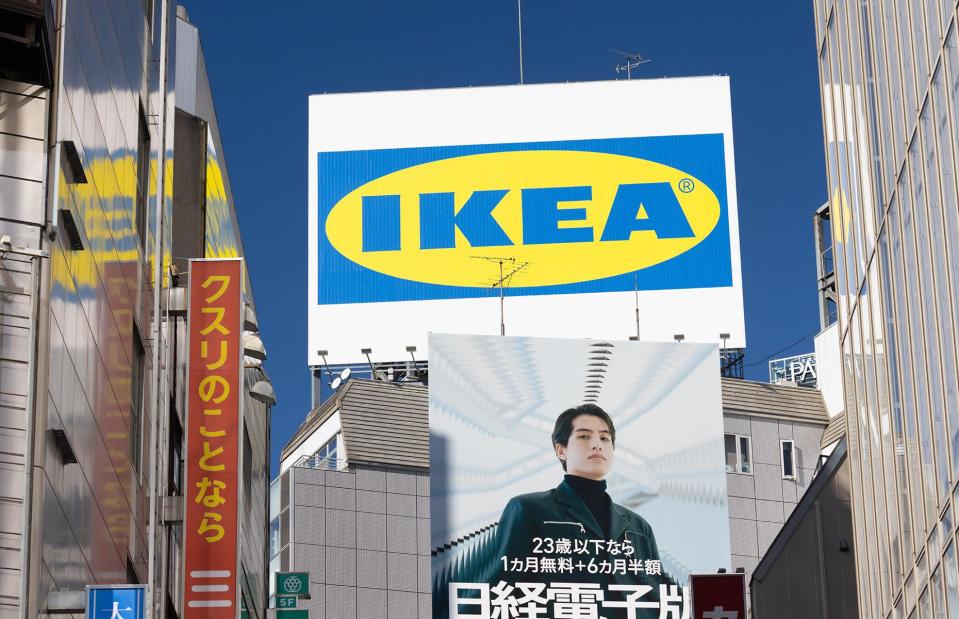
SOPA Images Limited / Alamy Stock Photo
IKEA has been expanding across the globe. With the ever-rising popularity of the minimalist-chic ‘Japandi’ style, it should come as no surprise that the stores have been a big hit in Japan since its flagship opened in 1977 in Tokyo.
There are now 13 IKEA locations throughout the country, which collectively hosted 26 million visitors in 2021. And, while IKEA classics play well in every market, certain items have proved particularly popular with Japanese customers.
Space-saving solutions
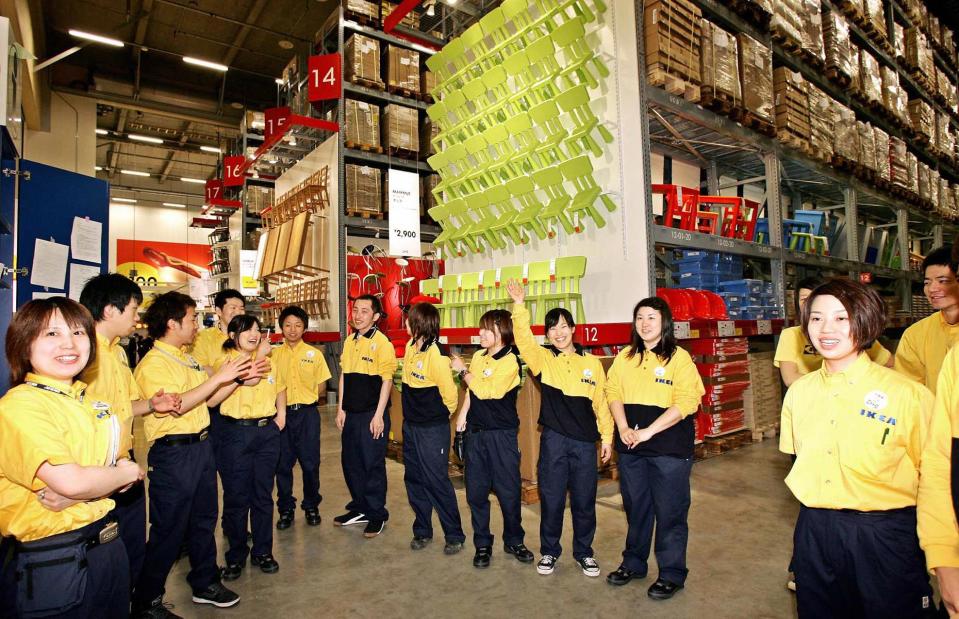
YOSHIKAZU TSUNO / Staff / Getty Images
As Japanese homes are often on the smaller side, storage solutions and small-scale furniture have proved to be in especially high demand.
Space-saving modular furniture, closet organisers and storage trolleys have all been big hits, as have functional accessories like hangers, freezer bags and – of course – the iconic blue tote. A place for everything and everything in its place!
IKEA in India

Eudaimonic Traveler / Alamy Stock Photo
IKEA has been present in India for over 30 years and has tweaked its product lines to best suit the needs of this highly price-sensitive market. Speaking to BBC News, IKEA India's chief commercial officer Kavitha Rao said a third of IKEA’s Indian range changes every year, and a quarter of its on-sale products are locally sourced.
There were also some product-specific tweaks IKEA needed to make to ensure they were best meeting the needs of its Indian consumers.
Locally made products

Sanjay Borra / Alamy Stock Photo
Because of the country’s high dust quotient, Indians tend to prefer closed storage units, so IKEA accommodated by reducing its wide range of open cupboards in favour of glass-fronted options.
When it comes to bedding, there is a cultural preference for harder mattresses, so IKEA released a locally-made mattress stuffed with coconut coir (the natural fibre extracted from the outer husk of a coconut), which has become one of the best-selling products in the country. Clearly, IKEA’s ability to adapt to the local consumer market has been a success, with shoppers consistently queuing to enter the stores.
IKEA in Africa

STR / Stringer / Getty Images
IKEA also has four locations on the African continent, having opened its first location in Cairo in 2013. There are now two other locations in Cairo, as well as a store in Casablanca, Morocco, pictured here.
IKEA made strides towards collaborating with African designers, architects and artists through exhibitions and conferences. One example was its collaboration with the annual Design Indaba Conference in 2017. The Design Indaba Conference in Cape Town gathered a team of in-house creatives from South Africa, Kenya, Senegal, Egypt, Angola, Ivory Coast and Rwanda to collaborate on new products based around the concept of modern rituals and the importance they play in the home.
Collaboration central
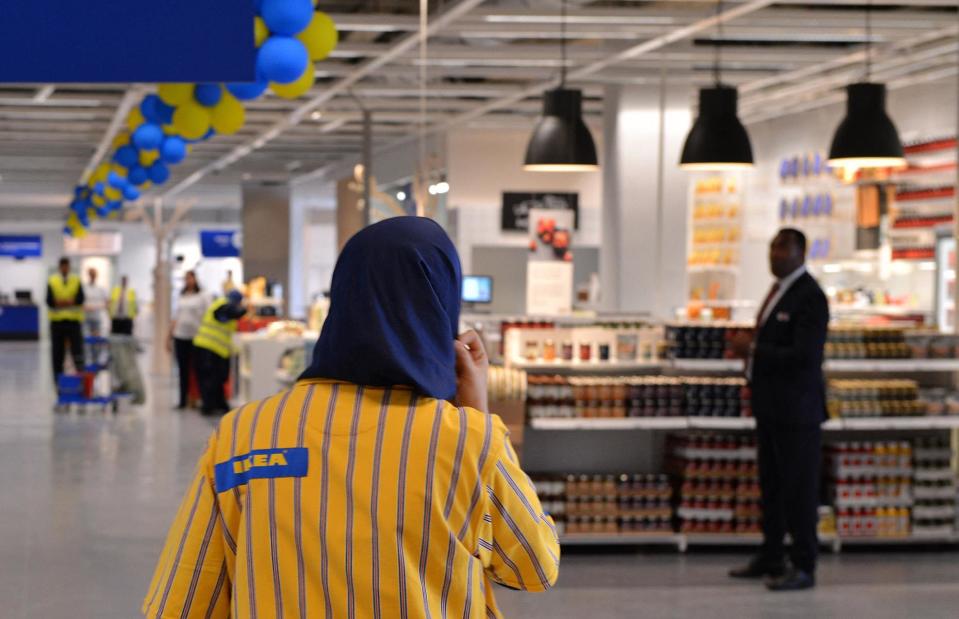
STR / Stringer / Getty
The culmination of the collaboration was IKEA’s first Africa collection, launched in 2019. Speaking to Design Week, IKEA creative leader James Futcher said the collection was a “palette of socialising tools”, created to encourage people to share stories, spend time with one another and be creative.
Although the collection of African and Swedish designers were shown how their pieces would be mass-produced at a factory, most of the collaborative work was done remotely from their home countries, showing just how far (literally) IKEAs ideas can go.
Swede dreams
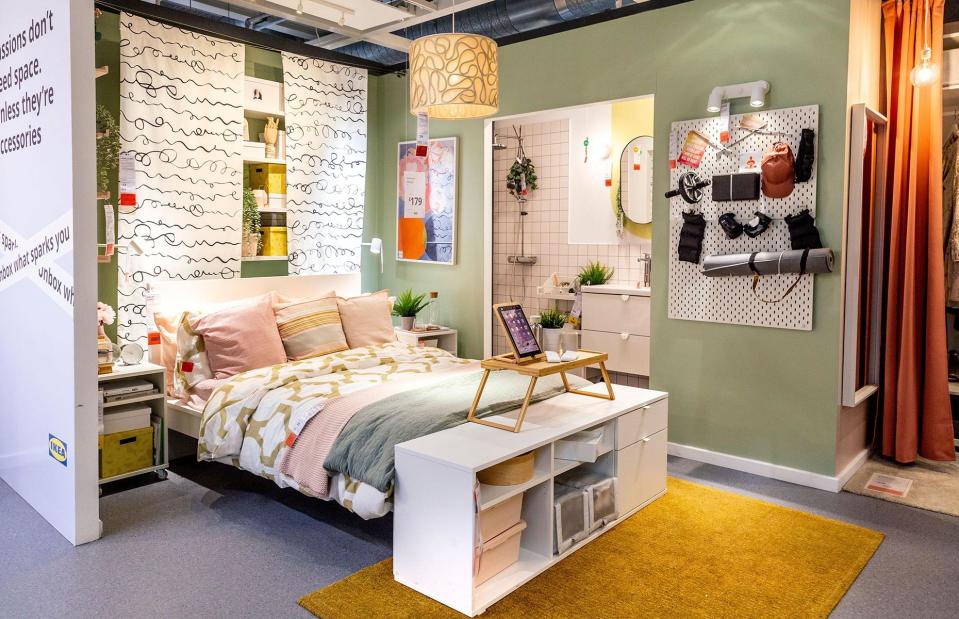
Nathaniel Noir / Alamy Stock Photo
With all that worldwide expansion, it's no wonder IKEA has been in and out of the news for various reasons over the decades. This particular nugget caught our eye. In 2016, The New York Times revealed that one in 10 Europeans are conceived on an IKEA mattress.
It is also estimated that one in five children in Britain is conceived on a bed purchased from our favourite Swedish furniture manufacturer. But which other IKEA pieces are a big part of our everyday lives?
The beloved BILLY bookcase

martin berry / Alamy Stock Photo
Numerous pieces of best-selling IKEA furniture have become household names over the decades, but none are arguably more famous than the must-have BILLY bookcase.
This archetypal product was designed in 1978 by Gillis Lundgren, who was so worried he’d forget the concept for the bookcase that he quickly sketched it out on the back of a napkin.
Iconic silhouette

Elizabeth Whiting & Associates / Alamy Stock Photo
IKEA’s classic POÄNG chair has been in circulation for more than 40 years – but what makes it so popular? The strong frame, timeless design and the ability to customise both the frame and fabric are just a few of its main draws.
Plus, the soft, comforting bounce of the chair makes it one of IKEA’s must-have items. The classic Scandi aesthetic of this chair might fool you into thinking that it was designed by a Swedish native. However, the POÄNG chair was actually dreamed up by Japanese designer Noboru Nakamura.
IKEA’s very own goodie bag

Richard Levine / Alamy Stock Photo
Any list of IKEA’s best-selling products wouldn’t be complete without a mention of the iconic FRAKTA shopping bag. Available for a mere 50p, this beloved blue bag will serve you for far longer than one shopping trip to IKEA and can double up as a storage sack or laundry bag once you’re back home.
The branded shopping bag is even said to have inspired Balenciaga’s luxury tote bag, or so though Dezeen – although its aqua-coloured item comes with a much higher price tag.
Collectors' items
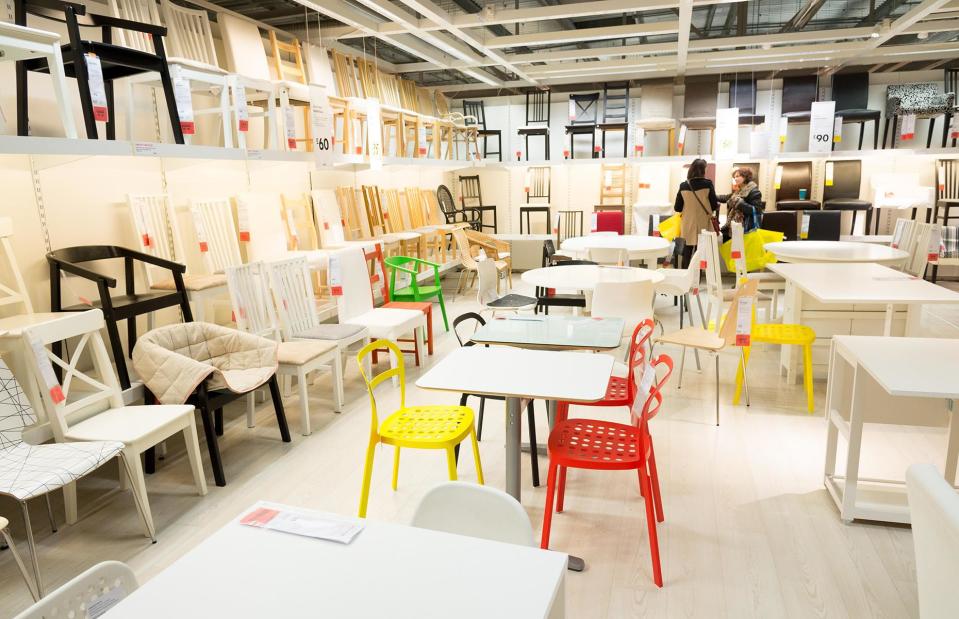
Alex Segre / Alamy Stock Photo
Many older pieces have stood the test of time and are now fetching up to four figures on the second-hand market according to The Washington Post.
With famous designers including Vernon Panton and Hella Jongerius on their roster for past collections, IKEA has built up a backlog of vintage furnishings which are now widely considered collectors' items, and which consistently sell for up to ten times their original market value.
Worth a fortune
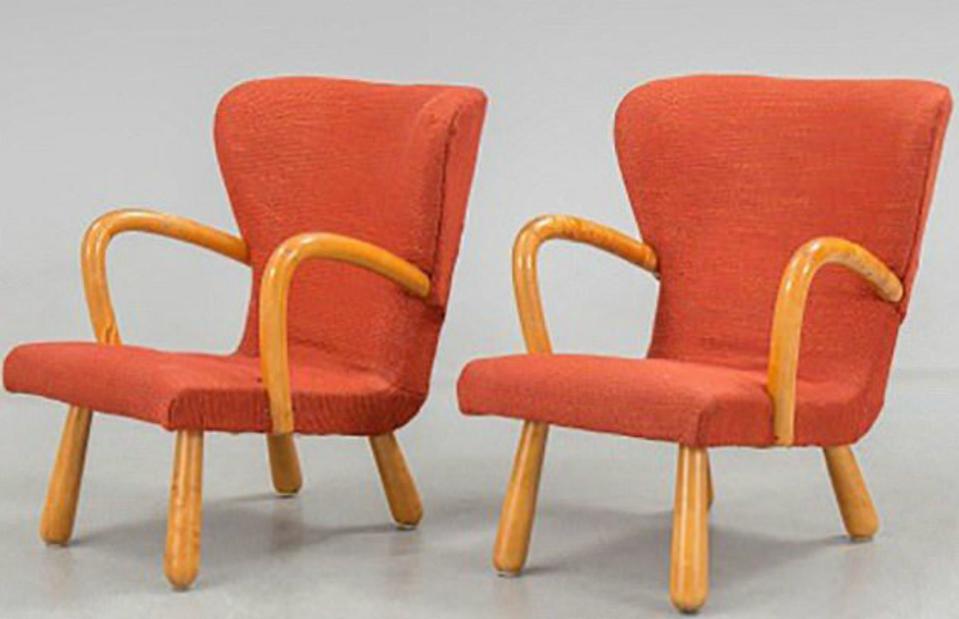
Barnebys / BNPS
While IKEA is celebrated for its affordable flatpack furniture, research has revealed that certain vintage pieces have been snapped up by collectors for inordinate sums. The research was conducted by Barnebys, a search engine aggregator that monitors sales from 2,000 auction houses across the globe.
To date, IKEA’s ‘mushroom’ chair (pictured) is the most expensive piece to have sold at auction, going for a whopping £50,000 ($63k). The piece was originally released in 1943.
Vintage treasure

Barnebys / BNPS
Ironically, much of the vintage furniture that is now valued so highly amongst collectors was a flop when it was first launched. This BERGSLAGEN side table from the 1980s (part of the brand's '18th-century collection') is worth as much as £2,275 ($3k) now.
You can browse other IKEA pieces from the 80s, and many other years, at ikeamuseum.com.
IKEA'S iconic designs
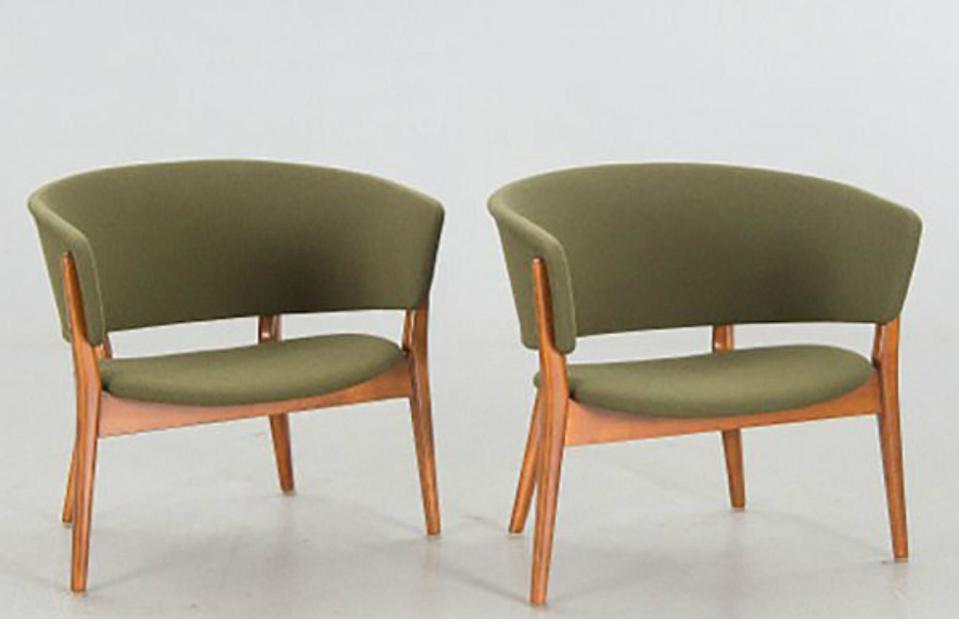
Barnebys / BNPS
Many of the items amongst IKEA’s most valuable vintage treasures were only in production for a short period of time, so there aren’t many of them around.
Designed by Erik Wørts, who it seems was in turn inspired by Danish designer Nanna Ditzel, these chairs are estimated to be worth £1,500 ($2k) each. Wørts was a Danish cabinet maker who moved to Sweden in the mid-1940s, where he got involved in the development of flat package furniture for IKEA.
Vintage IKEA
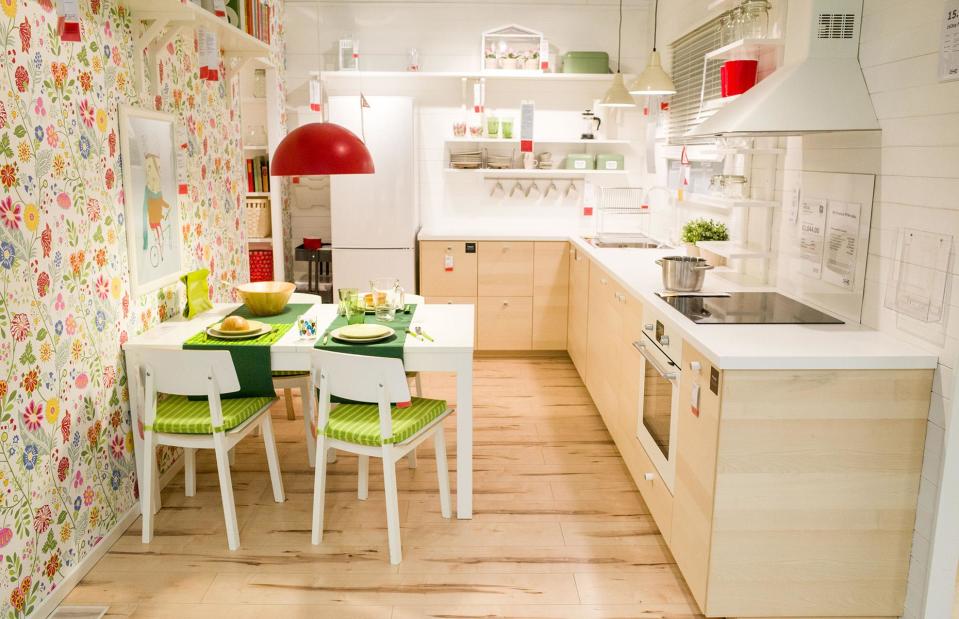
Alex Segre / Alamy Stock Photo
When the world's favourite Swedish manufacturer marked its last major milestone, its 75th birthday in the autumn of 2018, it rolled out a commemorative series of furniture collections to celebrate.
Named GRATULERA, the special series encompassed IKEA’s most iconic pieces since the company’s launch in 1943.
Furniture through the ages

brandstaetter images / Contributor
The vintage collection provided a fun look back at the iconic brand’s history and heritage. The series was released in three phases over Autumn 2018, with each stage focused on a specific period in the company’s past.
The first launch, which took place in August, focused on the firm’s 1950s and 60s designs. The second, featuring 1970s and 80s furnishings, launched in October, while the third collection arrived in December, with a revival of the 1990s and 00s.
A royal DYVLINGE armchair
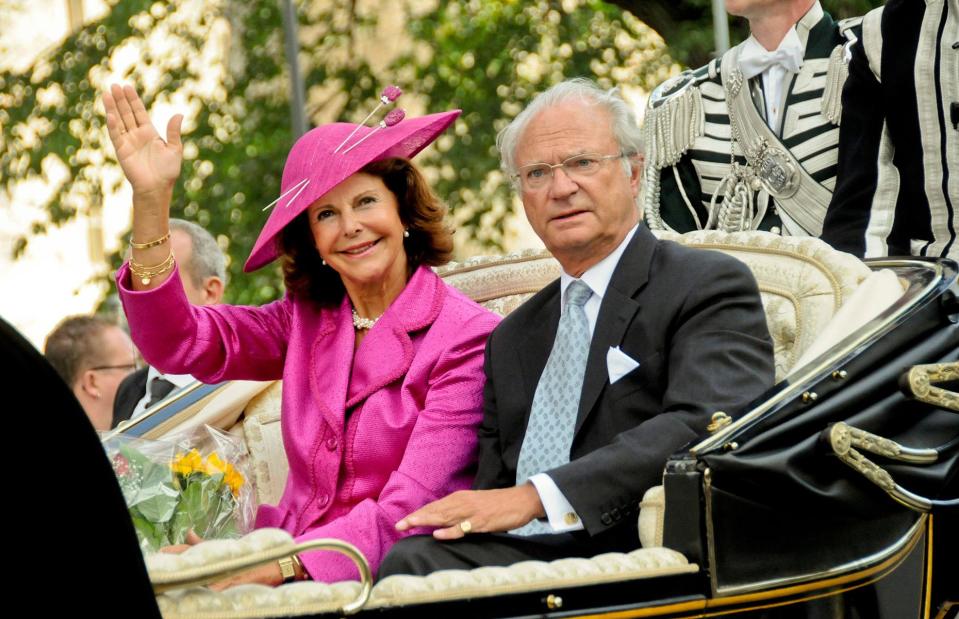
Rolf Adlercreutz / Alamy Stock Photo
However, its 80th birthday wasn’t the only anniversary IKEA has been celebrating. In honour of the King of Sweden’s 50th year on the throne in September 2023, the store created a unique new version of their iconic a MILA armchair.
First released in 1967, it was specially upholstered in royal blue with a pattern of gold hearts and crowns. The line of chairs, now renamed the DYVLINGE, was released to the public in January 2024.
A royal DYVLINGE armchair
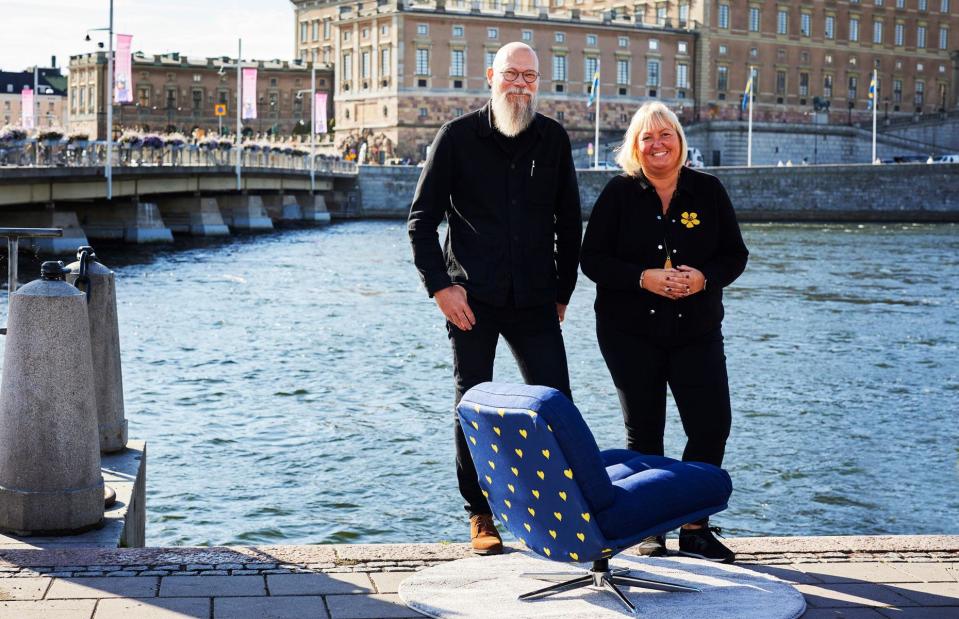
Gustaf Waesterberg
One of these armchairs, specially embossed with a royal warrant, was presented to the King at Kungsträdgården in Stockholm at the time of the anniversary celebrations.
Photographed by Gustaf Waesterberg, here, IKEA Sweden's Design Manager, Johan Ejdemo, and Country Manager, Emily Birkin, pose with the special chair. Johan explains: "This particular and unique piece has been handcrafted by our amazing co-workers...The design has been fabricated, printed, and then applied by our master upholsterers at our workshop in Älmhult, Sweden."
Smart home futures

Stock-Asso / Shutterstock
IKEA is adapting for the modern age, jumping on the smart home bandwagon which enables homeowners to monitor and manage their energy consumption from an app on their phone. The furniture store’s own smart home platform, the aptly named ‘Home Smart’, now offers an energy insights feature, which enables users to keep an eye on their consumption.
More advanced still, the company plans to release its first energy-monitoring smart plug, the INSPELNING, which will reportedly be useable for any device, in October of 2024, according to The Verge.
IKEA's changing image

I AM CONTRIBUTOR / Shutterstock
In its 80 years of service, IKEA has come a long way, not only in its global footprint, but also in terms of reputation. What started as a ‘cheap and cheerful’ option favoured by college students and newlyweds has evolved into a chic Scandi style, empowered the DIY movement and fuelled the small space revolution, outlines The Washington Post.
Throw in the coveted shopping experience of showroom browsing followed by a snack of Swedish meatballs, and you have a unique and iconic brand which extends far beyond flat-pack furnishings. We can't wait until our next IKEA trip.


